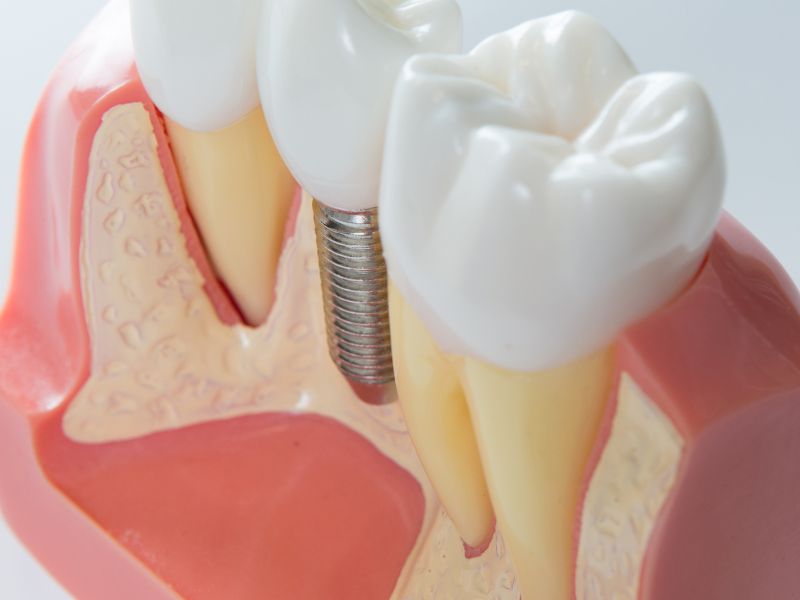Considered one of the most effective methods of replacing lost teeth, dental implants are a form of tooth replacement. Bridges provide a long-lasting solution that replaces the function and appearance of one or more teeth. The part of the implant that looks like a natural tooth is called an implant restoration, and is typically made out of a variety of materials, each unique to its own benefits. At Rochester Hills Dentist, we think that understanding these materials is an important step in making value-based decisions about your dental health. This article will focus on the various implant restoration materials categories and help you narrow down your options to identify which is right for you.
Common Types of Implant Restoration Materials
When choosing an implant restoration material, several factors like durability, aesthetics, and biocompatibility should be considered. Let’s take a closer look at the most common materials used:
Porcelain-Fused-to-Metal (PFM): A popular choice that combines the durability of metal with the aesthetics of porcelain, making it natural looking while still strong. PFM crowns are strong and can mimic natural teeth; nevertheless, years later the metal base might reveal through, especially at the gum line.
All-Ceramic Crowns: All Ceramic crowns are composed of solid ceramic material and are regarded for their top aesthetic results. They closely match the color of natural teeth, making them ideal for front teeth. They are very aesthetic as well, but maybe they might not be as strong whenever there are strong bite forces compared to PFM.
Zirconia crowns: A newer option than both porcelain and PFM crowns, zirconia crowns are extremely durable and able to hold up against high bite forces. They also display biocompatibility, which when defined describes them as less likely to elicit allergic responses and/or irritation. Although they do not offer a natural translucency compared to the ceramic choices, they are more durable, making them a popular selection for molar teeth.
Which Implant Restoration Material Is Right for You?
Choosing the right implant restoration material depends largely on your individual needs and priorities. Here are some aspects to consider:
Appearance: If the appearance of your teeth is your main concern, then all-ceramic crowns provide the most natural appearance and are excellent for anterior teeth where appearance is most important.
Durability: If you are a person who pays attention to strength and resistance to fractures, zirconia crowns are a perfect brand for you, especially when you use back teeth since the force of chewing is high in this area. They offer the needed strength and durability.
Metal-free: Both all-ceramic and zirconia crowns are considered more biocompatible than metal crowns, and are therefore better options for individuals with metal allergies or sensitivities. This lowers the chances of reactions and gives you peace of mind.
Cost: Cost is another factor you need to consider as well. While zirconia and all-ceramic crowns can cost more than PFM crowns, the cost of good material is cheaper than the cost of future adjustments and replacements.
By considering these factors, patients can make a more informed choice about their dental restoration material. It is always advisable to seek a professional consultation to explore what aligns with your dental health goals and budget best. At Rochester Hills Dentist, we’re here to guide you through every step of this journey.
Ultimately, your personal needs, lifestyle, and budget will dictate which implant restoration material is best for you. Each material has unique advantages depending on whether you prioritize appearance or durability. Get acquainted with these and ensure a wise informative decision with regards to making dental implants in Rochester Hills a successful venture that brings satisfaction.
Reference
Implant Restoration Materials: An Overview
https://www.researchgate.net/publication/244952502_Implant_Restoration_Materials_An_Overview
Comparison of Maintenance in Different Materials for Implant Dental Prostheses
https://pmc.ncbi.nlm.nih.gov/articles/PMC11426649/


0 comments on “Comparing Implant Restoration Materials: Which Is Best for You?”